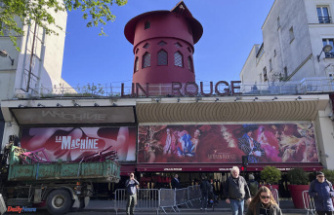Our author boarded a modern zeppelin at Lake Constance and felt like it was 100 years ago, when airships first traveled between Germany and America. Even the prices are still as high as they were back then.
It is an "excursion" worthy of the name - when flying becomes the destination rather than any arrival. Then you take off slowly and move at low altitude and without great speed above the earth, which is not reduced to geographic patterns and the total macro view of our existence, but which can present itself like the perfect miniature wonderland. Such excursions are made possible by the aircraft of the past. And because you don't want to crash like Icarus or Otto Lilienthal, or get wet when it rains like the inflated descendants of Montgolfière, a so-called airship is recommended. One that doesn't run on hydrogen, of course.
So it's a modern Zeppelin - "New Technology", short: NT - which takes off from Friedrichshafen on a sunny summer's day, makes a loop over Lake Constance and also flies briefly over Switzerland. In the name of tradition, it must be made clear that nobody is talking about "flying" here. Driving in an airship! So much is the "Zeppelin Luftschifftechnik GmbH
The first time - did you know? - it was in 1900 when a zeppelin took off: the "LZ1", as it was numbered in proper Prussian fashion from the start. The concept, or rather the Count's imagination, was anything but rational and sober. Even today you can feel in the "descendants" of the old zeppelins that they come from a completely different time - namely a romantic one - when the longing for magical moments was still great. The zeppelins of the Wilhelmine era did not frighten people like the first railways had decades before. Although they were much more dangerous, which resulted in numerous crashes. They did not fascinate with mechanical coldness and technical efficiency, but rather were looked at and cheered on like mythical creatures with a soul that invited you to ride through the clouds - of course in Sunday clothes and soon with coffee and cake.
This tradition ended with the First World War, when German zeppelins were suddenly used to silently transport bombs and kill people, especially in England. It was the moment when the soul of the Zeppelins revealed its dark side and brought the engineers to completely new ideas, combining the old magical vision with the most advanced technology and later also with the reduced progressive design of the Bauhaus. Only this ambivalence made possible the very large and global excursion of German airships - which was to last until the terrible crash of "LZ 129 Hindenburg" in Lakehurst, USA, in 1937.
The proverbial architect of this era was Hugo Eckener, a man who had initially worked as a journalist and psychologist until Count Zeppelin discovered in him the talents that made Eckener one of the most able entrepreneurs and one of the most popular Germans at home and around the world in the 1920s made - and was even briefly brought into play in 1932 as an opponent candidate of Adolf Hitler.
Eckener had recognized the cultural, business and political dimensions of the zeppelins, and he knew how to turn them into a shining silver symbol of the Weimar Republic on all three levels - and last but not least into an export hit "made in Germany". After more than 120 zeppelins had been built since the beginning of the century, Eckener managed a coup in 1922 with the order for the "LZ 126": He sold the zeppelin to the USA by paying it with outstanding reparations of 1.2 million Reichsmarks charged for the war. The deal was sporty and dangerous, but it was possible: a final payment was only due when the Zeppelin works at the other end of the Atlantic Ocean delivered a fully airworthy airship. Otherwise, the German state guaranteed the entire amount.
The plan was successful, and the arrival of the zeppelin later named "Los Angeles" on October 15, 1924 marked the beginning of the first transcontinental passenger traffic by air , which transported people and sometimes also cars and pianos 200 to 300 meters above the ocean between Friedrichshafen and Brazil, as well as between Frankfurt and New York, which is unimaginable today. The so-called "World Tour" in 1929, which was so spectacular that the Hearst press group bought the exclusive rights to reporting, made the Zeppelin the epitome of globalization.
What is aesthetically left from these times can still be admired in the magnificent Zeppelin Museum in Friedrichshafen. Before that, however, you should have allowed yourself the feeling that can be described as a "carriage ride through the air" and that only an excursion in a Zeppelin NT allows - albeit without coffee and cake and certainly not with a grand piano and in Erste -class cabins. Only the prices are comparable to the past: 250 euros for 30 minutes. That's around 30,000 euros for 60 hours - that's how long it took to cross the Atlantic 100 years ago in a zeppelin.












